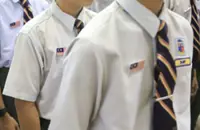An effective Higher Order Thinking Skills (HOTS) marking scheme should have multiple correct answers, interpretations or options, says secondary school standard-based curriculum (KSSM) science textbook author Tho Lai Hoong (pic).
Citing an example, he said there are at least five ways to measure the rate of carbon dioxide production from the action of yeast in sugar solutions at different temperatures. Hence, there can be different answers when a student is asked to measure the rate of carbon dioxide production, he explained.
“An effective HOTS marking scheme should state which skill - namely applying, analysing, evaluating or creating - are assessed; along with the appropriate marks or weightage to the different criteria based on its importance.
“Teachers should, however, be flexible if answers demonstrate critical thinking. And students, on their part, should provide examples of how their answers demonstrate critical thinking and problem-solving skills to help teachers understand the value of assessing beyond the marking scheme,” he said.
While stressing on the need for a marking scheme that would help teachers assess HOTS questions better, Tho said students themselves should tap into additional resources like textbooks, revision guides, and the Internet, to stimulate their interest and promote better understanding of a topic or concept.
“This helps students to answer HOTS questions that are focused on evaluating, creating, communication, decision-making and problem-solving skills,” he said.
To answer HOTS questions, Science and Biology teacher Shaziera Ishak said students must analyse information, synthesise ideas, evaluate evidence, and apply concepts to new scenarios.
Students, she said, sometimes struggle as HOTS questions can be more complex particularly in subjective assessments, as compared to multiple-choice questions (MCQs).
Unlike objective MCQs with a fixed correct answer, subjective questions may be evaluated based on the judgement of the teacher, leaving room for interpretation and subjectivity in grading.
“Students may feel apprehensive about what constitutes a good answer because of the subjective nature of HOTS,” she said.
Agreeing, Biology teacher Geetha Nair Balakrishnan said subjective questions can be intimidating for students if they have not grasped the concepts or lack confidence in their writing skills.
Time constraints during exams can also make it challenging for students to fully develop their answers or construct sentences consisting of all the essential phrases and key points outlined in marking schemes. This, she said, leads to incomplete or rushed responses. — By JAAYNE JEEVITA





